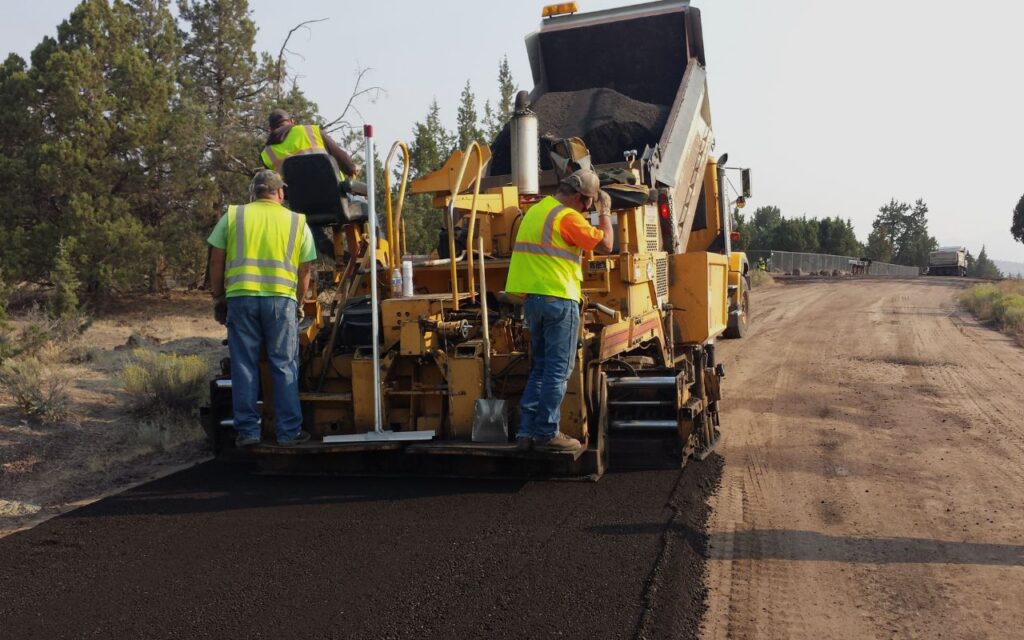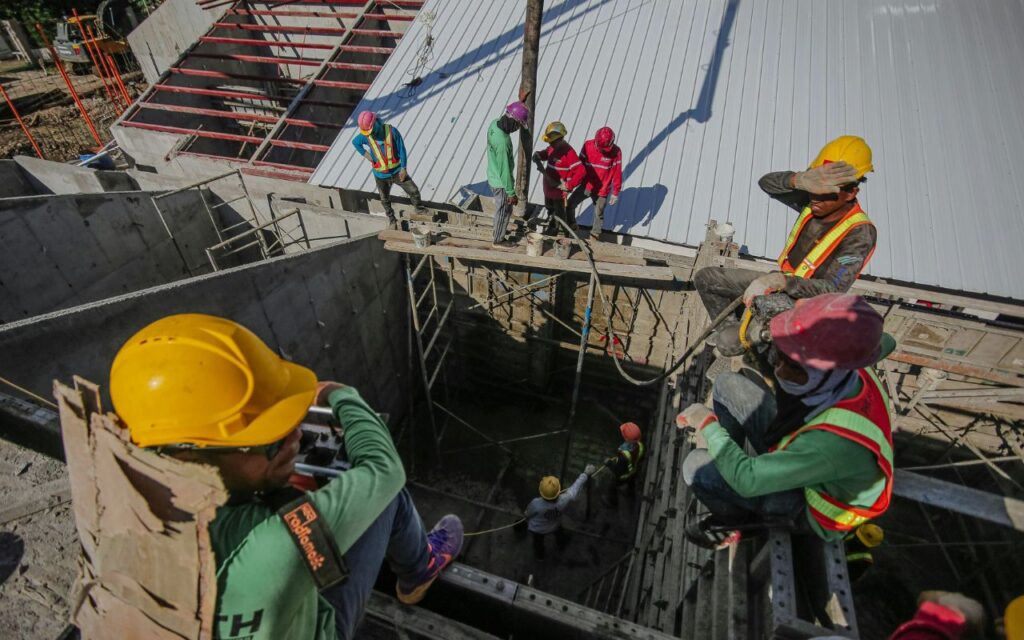Guest post by Safety Knights
There is no shade and it is 95 degrees outside. Shirts soaked with sweat stick to backs, hard hats feel like little ovens, and everyone’s patience is running out faster than the ice in the cooler. Does this sound familiar?
When the weather gets hot, keeping your team safe at work means more than just preventing heat-related illness. It also means keeping their spirits up and their minds clear. Research from the National Institute for Occupational Safety and Health (NIOSH) shows that heat stress affects not only physical health but also cognitive function, decision-making, and overall job satisfaction.

Smart leaders know that keeping morale high during hot weather isn’t just being nice—it’s a safety imperative. Workers are more likely to follow safety rules, look out for one another, and stay focused on avoiding accidents when they feel supported and valued. OSHA guidelines for heat stress emphasize that maintaining a positive work environment helps workers manage heat hazards more effectively.
Below are seven practical leadership strategies to keep your crew cool, comfortable, and motivated when temperatures rise.
1. Be Realistic About Outdoor Conditions
We need to move away from accepting triple-digit temperatures as just another part of the job. Great leaders address heat stress directly and acknowledge their workers’ discomfort instead of ignoring it.
During morning safety meetings, say what everyone’s thinking: “It’s going to be hard out there today.” This simple act of recognition shows that you care and builds trust. A study in the Journal of Occupational and Environmental Medicine found that workers are more likely to report safety concerns and follow heat safety rules if they feel management listens and understands them.
Make it normal for workers to talk about heat-related struggles. Encourage open communication so saying, “This heat is getting to me,” is seen as responsible self-awareness, not weakness. Normalizing these conversations removes the stigma that stops workers from reporting heat stress symptoms.
2. Make Comfort a Top Priority Whenever You Can
Small changes can significantly boost safety and morale in extreme heat. Industrial fans, pop-up shade structures, and cooling stations aren’t luxuries—they’re critical tools for keeping workers safe and productive. OSHA recommends engineering controls such as shade and ventilation in its Protecting Workers from Heat Illness guide.
- Encourage lighter-colored, breathable clothing where safety protocols allow.
- Invest in cooling PPE, like evaporative cooling vests or moisture-wicking hard hat liners. Research in the Journal of Occupational and Environmental Hygiene shows that cooling PPE can significantly reduce core body temperature during prolonged heat exposure.
Pro Tip: Lead by example. When managers use cooling stations and seek shade, it signals to workers that prioritizing comfort is a smart safety practice, not a sign of weakness.
3. Make Drinking Water Fun
Hydration doesn’t have to be boring, it can be a team-building activity.
- Organize friendly “hydration challenges” where teams track water intake and compete for small prizes.
- Offer flavored electrolyte drinks to make hydration more appealing. A study in the American Journal of Industrial Medicine found that workers consume about 25% more fluids when offered flavored options instead of plain water.
Keep a close eye on workers who may skip hydration breaks, like equipment operators reluctant to leave their stations. Check in personally to remind them that hydration is a safety requirement, not a suggestion.
4. Divide the Day
Standard break schedules often don’t account for extreme heat. Instead, implement shorter, more frequent breaks:
- Swap two 15-minute breaks for three 10-minute cool-down breaks throughout the day.
- Rotate high-exertion tasks with lighter duties to conserve energy and prevent heat exhaustion.
Important: Don’t leave breaks up to workers’ discretion. Announce scheduled breaks to ensure even the most dedicated employees don’t push through dangerous conditions. NIOSH emphasizes scheduled rest breaks as a vital part of heat illness prevention plans.
5. Keep Spirits Up
A well-placed joke or meme during a toolbox talk can lighten the mood and build connection.
Humor:
- Helps employees bond with leadership.
- Makes the workplace more enjoyable, even during tough conditions.
Studies in the European Journal of Work and Organizational Psychology show humor reduces stress and improves team dynamics.
Try:
- Light icebreakers during safety meetings.
- Sharing heat-related memes that acknowledge the challenge without trivializing safety risks.
Warning: Never use humor that downplays the dangers of heat stress or minimizes workers’ discomfort. The goal is to raise morale, not to dismiss real safety concerns. OSHA data indicates that positive communication correlates with lower rates of heat-related incidents.

6. Celebrate Small Successes
Recognition goes a long way—especially in challenging conditions.
- Praise crews working in extreme heat.
- Highlight workers who complete tough tasks or help teammates stay cool and hydrated.
Simple rewards can have a big impact:
- Cold treats on a hot day
- Small gift cards
- Public recognition during safety meetings
Be consistent with praise. Regular acknowledgment shows that leadership values the extra effort workers put into staying safe in extreme conditions. The Harvard Business Review reports that appreciation and recognition are among the strongest motivators for employees.
7. Pay Attention and Make Changes
The best heat safety programs evolve based on feedback from workers on the ground. Regularly ask for honest opinions about:
- What’s working in your heat management strategies
- What could be improved
More importantly—act on feedback. When workers see their suggestions implemented, trust and morale rise significantly. OSHA’s Heat Illness Prevention Campaign highlights worker involvement as a critical piece of effective safety programs.
Consider:
- Anonymous digital suggestion boxes
- Confidential surveys
This helps uncover issues that workers might hesitate to discuss in person.
What Are The Safety Knights?
At Safety Knights, we know that being an effective safety leader means more than following rules and procedures—it’s about building communities where safety professionals can connect and share solutions for challenges like extreme heat.
The Mission
Safety Knights is a global community of safety professionals dedicated to learning, collaboration, and growth. Our mission is simple:
To create the world’s best space for safety pros to network, share ideas, and solve real-world safety challenges.
A Safe Place for EHS
- Get real, judgment-free advice.
- Post anonymously if you ever feel unsure.
- Enjoy free support, 24/7.
One Source of Truth
We’re building the ultimate EHS resource—by safety professionals, for safety professionals.
The Vision
We believe safety and health should be central to the future of business. Join our community for free to enhance your workplace safety programs and connect with passionate safety pros around the world.
Ready to be part of the Safety Knights community? Sign up here and elevate your safety leadership game!

